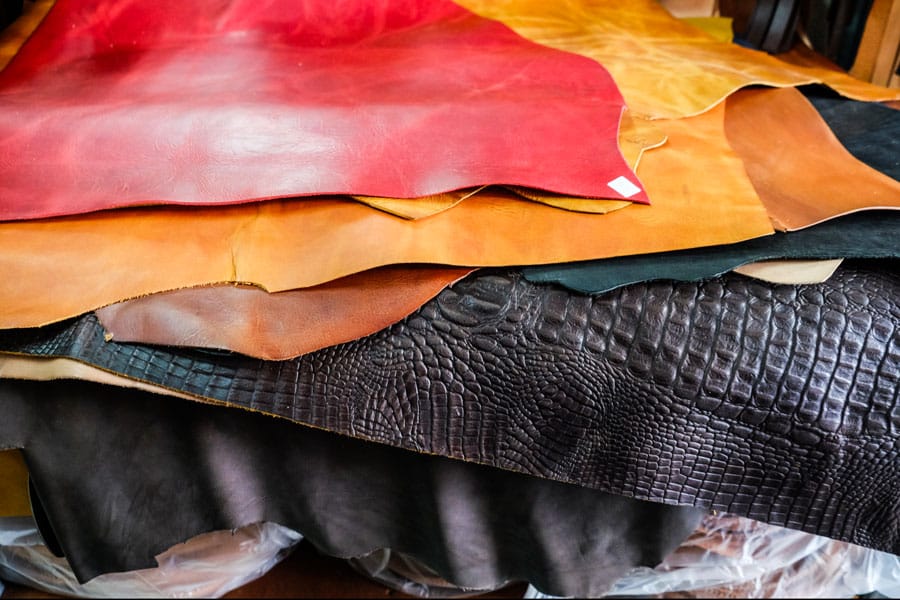Business as usual: the French luxury industry is flourishing both at home and abroad. And of all luxury goods, leather is one of the sectors that have been showing a lot of promise recently. However, even in this propitious context for global business development, the industry does have some new challenges to take on. Read on to find out more about both the problems and their solutions!
French leather goods enjoying success worldwide
In the past years, the luxury market has continued to chalk up great sales. Statistics compiled for the 20th luxury goods worldwide market study all point to this. Published by consulting firm Bain & Company, in partnership with Altagamma (an Italian umbrella foundation for high-end professionals), the report is conclusive. In 2019, the industry of personal luxury goods enjoyed 4% growth (at constant exchange rates) i.e. €281 billion. A fine performance!
Against this encouraging backdrop, the luxury leather goods industry is firmly positioned as one of the pillars underpinning growth, enjoying a rate of 7% (at constant exchange rates) for the sale of leather accessories on the global market. And France can hold its head up high among its various European competitors!
French leather goods come out on top
Indeed, luxury leather goods made in France are enjoying buoyant sales in exports. In its memo on the economy for the first half of 2019, the French Leather Council reported an increase of 16% in exports of French leather goods articles, i.e. a market worth €4 billion. France now ranks third worldwide for exports of leather goods articles and is the leader in Europe in this industry.
Did you know? The French Leather Council confirmed that the French footwear industry also climbed in 2019 with a 12% increase in exports, equivalent to €19 billion, which is great news for the entire industry!
Catering to high foreign demand for luxury handbags and totes, French luxury designers have also been creating jobs nationwide and opening more new production sites in the past few years.
In 2018, Hermès International reported investments worth €420 million over five years in French production: the group opened six fine leather workshops and created 1,650 positions for artisans. In 2019, Louis Vuitton inaugurated a new workshop for leather goods in Maine-et-Loire (in the north-west of France) and a third production site in nearby Vendée, creating a total of 500 jobs. Business is looking brisk!
An industry buoyed by major French luxury brands
In the global footwear and luxury leather goods industries, some big names have built the reputation of the leather industry. Names like Church and other luxury brands such as Giuseppe Zanotti, Hogan, Paul Smith, Pierre Hardy, Premiata, Salvatore Ferragamo, Santoni, Chiara Ferragni, Stuart Weitzman, Chanel and Gucci need no introduction.
Among these prestigious brands, several French entities boast great appeal abroad given their exceptional savoir-faire. Louis Vuitton is THE reference in terms of export success. Christian Dior is also very well positioned on the international scene, with its famous Lady Dior bag for example. Yet other French brands have carved out a reputation for themselves in the field, such as Chloé and Pierre Hardy in Paris. Excellence à la française is a given: it is highly sought-after by those who buy luxury goods, whatever their nationality!
To find out more about the reasons for the success of French brands abroad, read the rest of the article here!
New clients, new challenges in the luxury leather goods industry
So French luxury leather goods are enjoying brisk business internationally. This doesn’t necessarily mean it’s in the bag for industry players!
Indeed, as with other professionals in French luxury goods, they have to rise to many new challenges, for consumer profiles are changing, as are their consumer habits!
Luxury leather goods: younger targets
While the USA is among the top three main clients for French leather goods, demand is strongest in Asia, with an increase in sales in Hong Kong (14%) and Singapore (13%) in particular. These potential Asian clients have the means to indulge their whims: whatever the price tag for luxury bags, they are willing to pay. But only on condition that brands meet their ever-fluctuating expectations!
Millennials, aka Generation Y, are now starting to embrace the luxury market. Born between 1980 and 2000, these regular buyers of luxury goods alone accounted for 35% of the market in 2019 according to the Bain & Company annual survey (cited above), which figure is slated to rise to 45% by 2025. They are demanding, and increasingly attuned to the luxury brands’ marketing pitch and societal commitments.
Changes in consumer behaviour
This younger bracket of consumers, soon to include the next generation (Z), are ushering in considerable changes in consumer behaviour.
These new clients for luxury leather goods are hyper-connected digital natives, who are perfectly comfortable shopping online, buying their favourite products in a couple of clicks. They keep abreast of campaigns run by their favourite brands on social media. So the entire communication and sales strategy needs to be adapted to them!
To draw in this new foreign clientele, who are younger, more volatile and more demanding, luxury leather goods brands have to:
- Create a strong sense of attachment. To achieve this, they have to foster emotional appeal with a well-targeted marketing pitch in each language, wordsmithery to do justice to the high-end products touted!
- Develop digital channels popular among consumers: multilingual websites, localised social media posts etc.
Do you need a professional translation?
Specialist translation: giving French luxury brand a competitive edge in exports
To stand out from the crowd on the global market for luxury leather goods, French brands have a significant card up their sleeves: specialist translation!
A translation agency specialising in the world of luxury goods can provide effective support to luxury leather brands aiming for global success. The agency calls on a team of translators, each working into their native language, who boast expert knowledge in marketing and specialist knowledge of the leather goods industry, as well as being well-acquainted with the cultural codes specific to each target country. These translators can help to:
- Localise the marketing campaign. Slogans, taglines and messages are adapted to potential foreign clients in each language. They know how to appeal to the mindset of these consumers of luxury goods, whether they are Chinese or American!
- Attract the attention of the foreign press with top-quality press kits and releases in harmony with the brand’s strategy and editorial line.
- Provide hard-hitting translations for all digital media (websites, apps etc.). Leveraging their expertise in SEO and internet idiom, translators can considerably raise brand visibility on the net, as well as smoothing the user experience.
- Step up the brand’s multilingual presence on social media using tailored localisation.
While French luxury leather goods figure among the leaders on the global market, they still need to take up the challenge of adapting to a younger foreign clientele with digital consumer habits to hold on to their ranking. Given these challenges and the current backdrop, French industry players still have a trump card since they can rely on a expert partner specialising in translation in the world of luxury. Hard-hitting communication that international clients relate to can make all the difference: it’s a guarantee of quality on a par with the luxury products they sell, and it helps to boost client confidence at a time when clients are ever more demanding.







